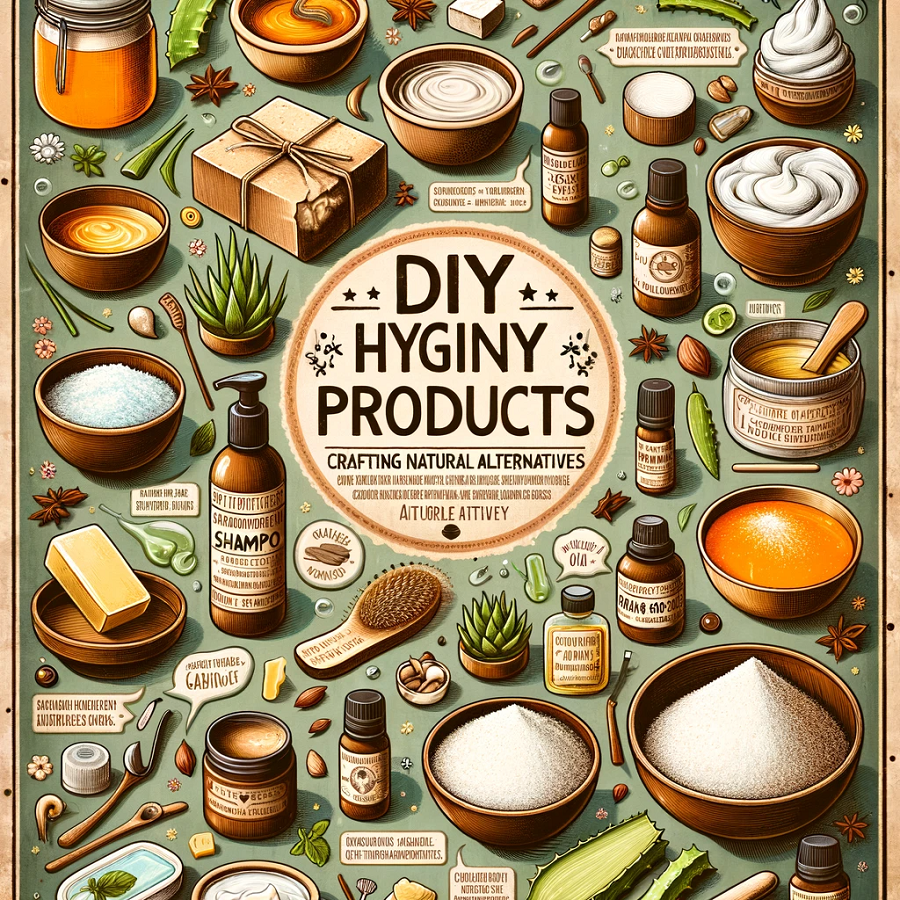Introduction to Selecting Hygiene Products for Sensitive Skin
When it comes to sensitive skin, choosing the right hygiene products is crucial for maintaining skin health and comfort. Sensitive skin reacts more intensely to stimuli, making it prone to irritation, redness, and allergic reactions. Thus, the journey to find suitable hygiene products can be challenging yet rewarding. This article aims to guide you through this process, offering insights into what to look for and what to avoid, ensuring your skin stays healthy and happy.
Understanding the Needs of Sensitive Skin: Key Considerations
Sensitive skin demands extra care and attention. It’s vital to understand that what works for normal skin might not be suitable for sensitive types. Key considerations include identifying specific skin triggers, understanding ingredient lists, and recognizing the importance of a product’s formulation. Products should be free from harsh chemicals, fragrances, and dyes, which are common irritants. Instead, look for soothing ingredients like aloe vera, chamomile, and hyaluronic acid. Also, consider the product’s texture and consistency, as heavy creams can sometimes clog pores and exacerbate skin issues.
Top Ingredients to Look for in Hygiene Products for Sensitive Skin
When shopping for hygiene products, certain ingredients are beneficial for sensitive skin. These include:
- Aloe Vera: Known for its soothing properties, aloe vera can help calm irritation and hydrate the skin.
- Ceramides: Essential for maintaining the skin’s barrier, ceramides help in preventing moisture loss and protecting against environmental irritants.
- Niacinamide: This vitamin B3 derivative helps in reducing inflammation and redness.
- Glycerin: A humectant that attracts moisture, glycerin is excellent for keeping the skin hydrated without causing irritation.
Avoid ingredients like alcohol, sulfates, and artificial fragrances, as they can strip the skin of its natural oils and cause irritation.
Navigating Common Irritants: What to Avoid in Hygiene Products
Sensitive skin can react negatively to various common ingredients found in hygiene products. It’s essential to be vigilant about avoiding:
- Fragrances: Often the culprit behind skin reactions, fragrances (even natural ones) can be irritating.
- Alcohol: While it may give a product a quick-drying finish, alcohol can be overly drying and irritating for sensitive skin.
- Parabens: Used as preservatives, parabens can cause allergic reactions in some individuals.
- Sulfates: Common in cleansers and shampoos, sulfates can strip the skin of its natural oils, leading to dryness and irritation.
Daily Skincare Routines: Incorporating Gentle Hygiene Products
Crafting a Sensitive Skin-Friendly Routine
For those with sensitive skin, a daily skincare routine should be simple yet effective, focusing on hydration and protection. Start with a gentle cleanser to remove dirt and oil without stripping the skin’s natural barrier. Follow up with a hydrating toner, free from alcohol, to balance the skin’s pH levels. A lightweight, fragrance-free moisturizer should be used both in the morning and at night to keep the skin hydrated. Lastly, don’t forget sunscreen during the day, even if you’re indoors, to protect against UV rays and environmental stressors.
Weekly Care: Exfoliation and Masks
Exfoliation is vital for removing dead skin cells, but it must be done gently to avoid irritating sensitive skin. Opt for a mild chemical exfoliant, like lactic acid or a low concentration of glycolic acid, once a week. Additionally, incorporate a soothing face mask into your routine, such as ones with colloidal oatmeal or green tea, to calm and hydrate the skin.
Expert Tips: Advice from Dermatologists on Sensitive Skin Care
Choosing the Right Products
Dermatologists recommend looking for products labeled as ‘hypoallergenic’, ‘non-comedogenic’, and ‘for sensitive skin’. These products are typically formulated without common irritants and are less likely to cause adverse reactions. It’s also advised to patch test new products before fully incorporating them into your routine. Apply a small amount behind the ear or on the inner arm and wait 24-48 hours to check for any reaction.
Lifestyle and Dietary Adjustments
Beyond topical treatments, experts suggest lifestyle and dietary changes to enhance skin health. This includes staying hydrated, managing stress, and eating a balanced diet rich in omega-3 fatty acids and antioxidants, which can help reduce inflammation and support skin health.
Making a Change: Transitioning to Suitable Hygiene Products for Sensitive Skin
Identifying Personal Skin Triggers
The first step in transitioning is to identify personal skin triggers. This can be done through trial and error or with the help of a dermatologist. Common triggers include certain fabrics, environmental factors, and specific ingredients in skincare and makeup products.
Gradual Transition and Consistency
When switching to new products, it’s important to make the transition gradual. Start by replacing products that stay on the skin the longest, like moisturizers and serums, before moving on to cleansers and toners. Consistency is key in a skincare routine, so give your skin time to adapt to new products before assessing their effectiveness.
Embracing Minimalism in Skincare
For sensitive skin, less is often more. Embrace a minimalist approach by using fewer products and choosing multi-purpose items. This not only simplifies your routine but also reduces the chance of irritation from overloading the skin with too many ingredients.
The Role of pH Balance in Hygiene Products for Sensitive Skin
Understanding pH and Skin Health
The pH level of your skin plays a crucial role in maintaining its health and resilience. The skin’s natural pH hovers around 5.5, which is slightly acidic. This acidity helps to form a barrier known as the acid mantle, protecting against harmful microbes and environmental stressors. Using hygiene products that are pH-balanced is essential for sensitive skin, as it helps to maintain this natural barrier and prevent irritation.
Choosing pH-Balanced Products
- Cleansers: Look for cleansers with a pH level close to that of the skin. Avoid alkaline products which can disrupt the skin’s natural balance.
- Toners and Moisturizers: Opt for toners and moisturizers that promote hydration without altering the skin’s pH. Products containing ingredients like hyaluronic acid are beneficial.
- Read Labels Carefully: Check product labels for pH information or conduct your own test with pH strips available at pharmacies.
Natural vs. Synthetic: Choosing the Best Options for Your Skin
Benefits of Natural Ingredients
Natural ingredients are often gentler on the skin and less likely to cause irritation. They can provide hydration, nourishment, and soothing properties without harsh chemicals. Examples include aloe vera, chamomile, and tea tree oil.
When to Choose Synthetic
While natural ingredients are beneficial, not all synthetic ingredients are harmful. Some synthetic components are specifically designed to be gentle on sensitive skin and can be more stable and effective in certain formulations. For instance, synthetic hyaluronic acid is a powerful hydrator and is often well-tolerated by sensitive skin types.
Balancing Natural and Synthetic
- Know Your Skin: Understand your skin’s specific needs and sensitivities. This will help in choosing between natural and synthetic ingredients.
- Research: Stay informed about different ingredients and their effects on sensitive skin.
- Patch Test: Always perform a patch test when trying new products, whether natural or synthetic.
Making a Change: Transitioning to Suitable Hygiene Products for Sensitive Skin
Identifying Personal Skin Triggers
Understanding what triggers your skin’s sensitivity is the first step in transitioning to suitable products. Common irritants include certain chemicals, fragrances, and even some natural ingredients.
Steps for a Smooth Transition
- Replace Gradually: Start by replacing products that are used most frequently. Moisturizers and cleansers are a good starting point.
- Monitor Your Skin’s Response: Pay close attention to how your skin reacts to each new product. This will guide further changes in your routine.
- Seek Professional Advice: Consult with a dermatologist if you’re unsure about which products to choose.
Embracing a Minimalist Approach
- Simplify Your Routine: Use fewer products to reduce the risk of irritation. Look for multi-purpose products that can serve several functions.
- Focus on Key Ingredients: Choose products with key ingredients known to be beneficial for sensitive skin.
- Be Patient: Allow your skin time to adjust to new products. It may take a few weeks to notice improvements.
Final Thoughts:
Selecting the right hygiene products for sensitive skin is a journey that requires careful consideration and a deep understanding of your skin’s unique characteristics and needs. By prioritizing pH-balanced products, discerning between beneficial natural and synthetic ingredients, and adopting a gradual, informed approach to transitioning skincare items, individuals with sensitive skin can achieve optimal skin health and comfort. Remember, the key to success lies in simplicity, patience, and being attentive to how your skin responds to different products. With the right knowledge and choices, managing sensitive skin becomes a manageable and rewarding experience, leading to a happier, healthier you.




